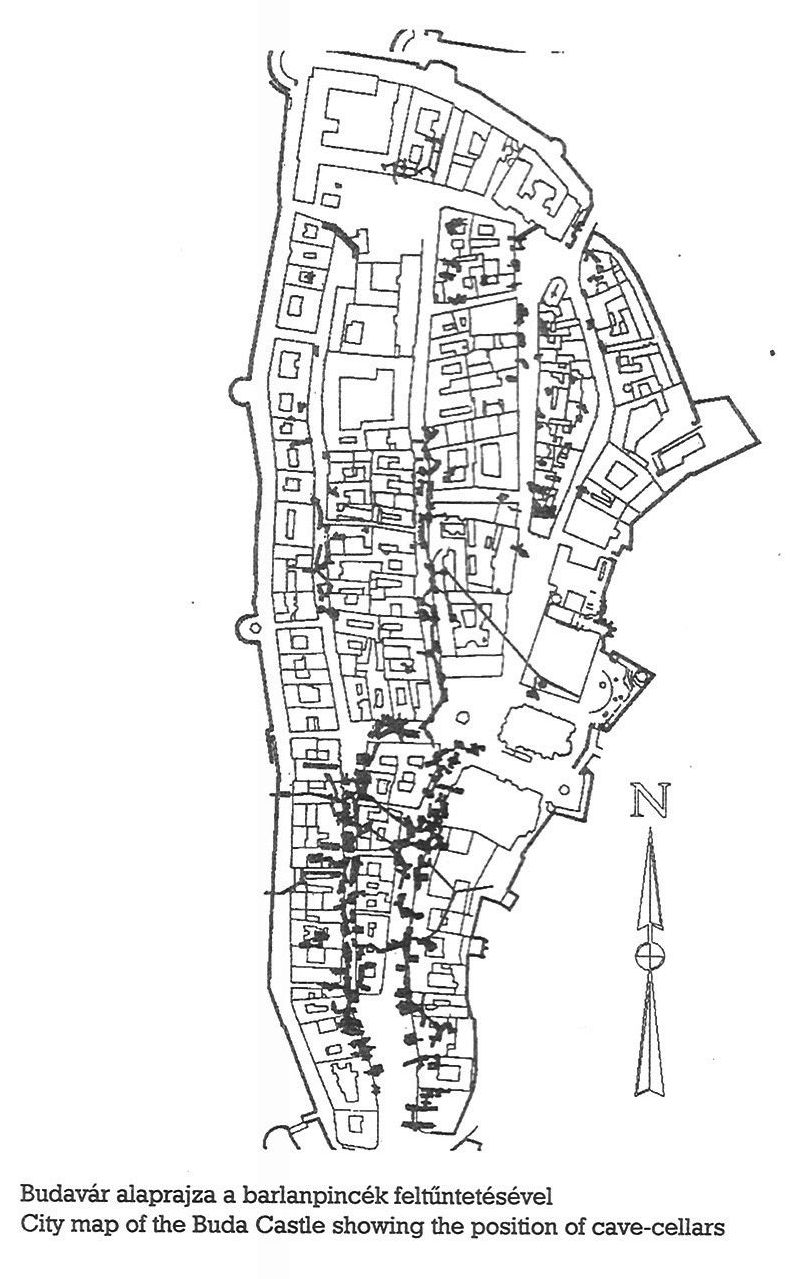MEDNYÁNSZKY Miklós
I. kerületi Önkormányzat, Budapest - Magyarország
Budapest 1st District Municipality - Hungary
A pinceveszély-elhárítási program szerepe a budai várbarlang reambulációjában
The Role of Cellar Troubleshooting in the Restoration of the Buda Castle Cave
Már a XIX. században is igen sok gondot okoztak a Budai Vár alatti barlangok, pincék.
A rendelkezésre illó dokumentumok bizonyítják, hogy a múlt század végén a sok helyen bekövetkezett útbeszakadás miatt-a városi tanács úgy rendelkezett, hogy a vári barlangokat törmelékkel, szeméttel, földdel be kell tömni. Sajnos az eltömött részekről semmilyen szakszerű leírás nem maradt ránk, nehéz megtalálni őket. Megpróbálkoztunk a geofizika legkorszerűbb eszközeivel is. Egyes esetekben sikerre vezetett a földradar vizsgálat.
Az 1980-as évek végén megjelenő újabb problémák felmérésére és megoldására a FŐMTERV dolgozott ki programot. Ez a szükséges barlangmegerősítések mellett tartalmazza az üregekhez kapcsolódó támfalak, közművek állapotának javítását is. Az intézkedési terv 1992-es árakon 728 millió forintot irányzott elő a problémák megoldására. Mai ismereteink szerint a Budai Vár alatt életveszélyes állapotú barlangpince már nincs.
A mai napig több, mint 2800 m2-nyi barlang került feltárásra. A barlangok olyan megerősítést nyernek, mely lehetővé teszi a későbbi hasznosításukat.
A munkákhoz az engedélyt a KTM Természetvédelmi Hivatala adja és közreműködnek Országos Műemlékvédelmi Hivatal és a Budapesti Történeti Múzeum szakemberei is.
A Budai Vár pinceveszély-elhárítási programját saját erőnkből és állami támogatásokból (Központi Környezetvédelmi Alap, Vízügyi Alap, Országos Műemlékvédelmi Hivatal) finanszírozzuk.
The caves and cellars below Buda Castle caused a lot of problems as late as the 19th century. In 1884 György Luka wrote a letter to the Minister of the Interior in which he mentioned the study of the cave under the Országház street. He drew attention to the urgent need of regulating the cavities, highlighting the possibility of irreparable damage, and the need to secure them.
Available documentation shows that at the end of the 19th century a number of roads collapsed at several places; therefore, the municipality ordered the underlying cavities to be filled with debris, earth, etc. Unfortunately this has made problems for the people who survey the caves today. here is no proper documentation concerning the blocked parts. II is hard to find them, and they are often identified on the basis of local knowledge. Efforts have been made 10 use the latest geophysical techniques. In some cases (e.g. on the eastern side of Dísz square) ground penetrating radar helped find the underground passages. However, those cavities which were filled up with debris with the same density as their environment, cannot be detected by the radar.
To handle and manage the new problems which arose at the end of the 19805, the Civil Engineering Design Office of the Capital (Főmterv Co.) developed a middle term program. In addition to the necessary support of the caves, the program contains measures for improving the general state of public utilities. Based on 1992 prices, the program costs are estimated al 728 million forints (l USD was roughly equal to 210 HUF in October, 1998. The editor.). Thirty percent of the independent cave cellars were determined to be in a perilous condition, 48% in bad and 22% in medium condition. Since that time, ratios have changed favorably, and according to cur present knowledge, there are no perilous caves below the Buda Casue.
Up to the present time, more than 2,800 m2 of the caves have been surveyed. During this work attention was paid primarily to providing proper supports to the caves and deep cellars. which will make their utilization possible at a later stage. As a result of the work, up to 1997, only 4 hopeless cavities were filled in while 18 got proper supports.
During the past 6 years, work has been done below the Dísz square, Táncsics Mihály and Úri streets. In 1994-95, the man-made cellar systems below Szentháromság square had to be supported. because they had collapsed in several places.
The prevention works are not spectacular for the layman as mostly only a few tens of square meters can be seen on the surface from where they provide facilities for the underground work. The underground work is spectacular only after completion, and the huge amount of background work is known only by the people who are involved in the projects. The decision about the final site of a single supporting pillar is often preceded by negotiations lasting a few months.
The engineering and construction company experts aim to maximize the stability of the cellars for the sake of their safe utilization.
As the Castle Caves fall under nature conservation, the permits for such underground works are issued by the Authority of Nature Conservation. As all caves are located below historic buildings, experts of the National Authority of the Conservation of Historic Monuments and the Historic Museum of Budapest Me also involved.
The program of cellar damage prevention of the Buda Castle is financed from two sources: the budget of the Municipality and from government sources. In 1992-94 government subsidy was still 50- 10 million forints, but now this contribution has been reduced to 20 million forints per year. The Municipality makes bigger and bigger effort 10 provide funds, and the original budget of 5 million forints was increased to 30 million by 1997-98. Given the huge size of the tasks, the Municipality has applied for different state funds in the past years. In 1995-96 a grant of 20 million forints was obtained from the Central Environmental Protection Fund, and the Water Management Fund and the Office for Protection of Historical Monuments also supports the work
Between 1992 and 1997 more than 4$0 million forints was spent on the work, The project plan, which was completed at the end of 1997, lists tasks up to the end of 2005, for which an additional 400- 450 million forints is needed. More than 70 % of this money is required for new prevention works, while the rest is needed for completing other jobs.

